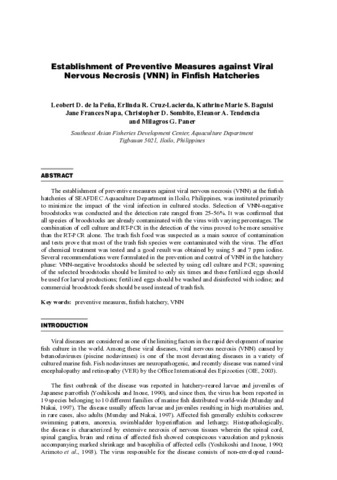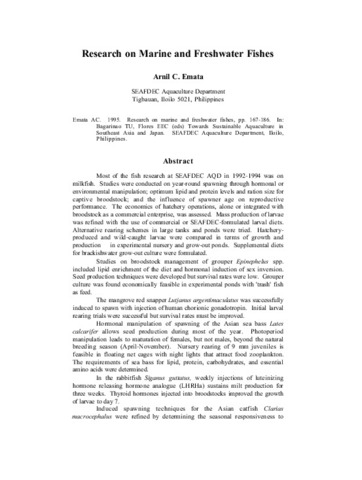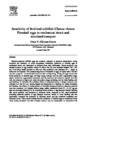Establishment of preventive measures against viral nervous necrosis (VNN) in finfish hatcheries
- Global styles
- MLA
- Vancouver
- Elsevier - Harvard
- APA
- Help

Date
2005-03Author
Page views
3,431ASFA keyword
AGROVOC keyword
Taxonomic term
Metadata
Show full item record
Share
Abstract
The establishment of preventive measures against viral nervous necrosis (VNN) at the finfish hatcheries of SEAFDEC Aquaculture Department in Iloilo, Philippines, was instituted primarily to minimize the impact of the viral infection in cultured stocks. Selection of VNN-negative broodstocks was conducted and the detection rate ranged from 25-56%. It was confirmed that all species of broodstocks are already contaminated with the virus with varying percentages. The combination of cell culture and RT-PCR in the detection of the virus proved to be more sensitive than the RT-PCR alone. The trash fish food was suspected as a main source of contamination and tests prove that most of the trash fish species were contaminated with the virus. The effect of chemical treatment was tested and a good result was obtained by using 5 and 7 ppm iodine. Several recommendations were formulated in the prevention and control of VNN in the hatchery phase: VNN-negative broodstocks should be selected by using cell culture and PCR; spawning of the selected broodstocks should be limited to only six times and these fertilized eggs should be used for larval productions; fertilized eggs should be washed and disinfected with iodine; and commercial broodstock feeds should be used instead of trash fish.
Suggested Citation
de la Peña, L. D., Cruz-Lacierda, E. R., Baguisi, K. M. S., Napa, J. F., Sombito, C. D., Tendencia, E. A., & Paner, M. G. (2005). Establishment of preventive measures against viral nervous necrosis (VNN) in finfish hatcheries. In K. Nagasawa (Ed.), Recent Advances in Diagnosis and Prevention of Fish and Shrimp Diseases in Southeast Asia (pp. 115–125). Tigbauan, Iloilo, Philippines: Aquaculture Department, Southeast Asian Fisheries Development Center.
Type
Book chapterISBN
9718511732
Related items
Showing items related by title, author, creator and subject.
-
Research on marine and freshwater fishes
Emata, Arnil C. (Aquaculture Department, Southeast Asian Fisheries Development Center, 1995)Most of the fish research at SEAFDEC AQD in 1992-1994 was on milkfish. Studies were conducted on year-round spawning through hormonal or environmental manipulation; optimum lipid and protein levels and ration size for ... -
Sensitivity of fertilized milkfish (Chanos chanos Forsskal) eggs to mechanical shock and simulated transport
Hilomen-Garcia, Grace V. (Elsevier, 1998)Naturally-spawned milkfish eggs are routinely subjected to physical manipulation during collection and transport. To avoid unnecessary mortalities, sensitivity of milkfish eggs to mechanical shock was determined at different ... -
The sulfide tolerance of milkfish and tilapia in relation to fish kills in farms and natural waters in the Philippines
Fish kills of milkfish Chanos chanos and tilapia Oreochromis spp. now occur frequently in brackish, marine, and freshwater farms (ponds, pens, and cages) in the Philippines. Aquafarms with high organic load, limited water ...

 AQD Access
AQD Access





